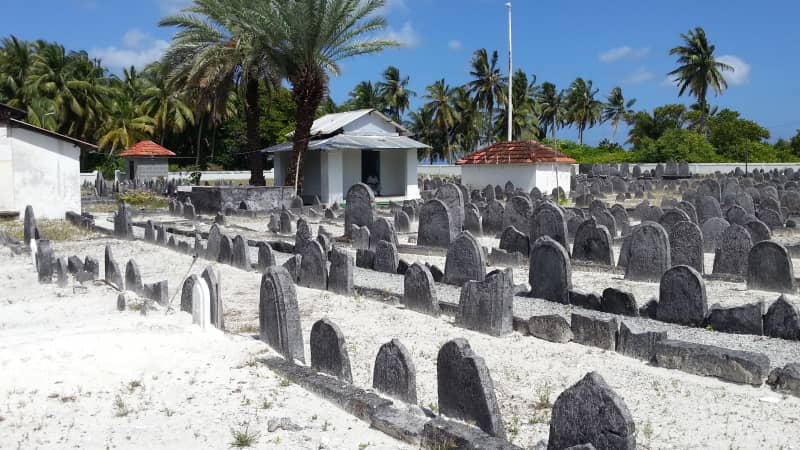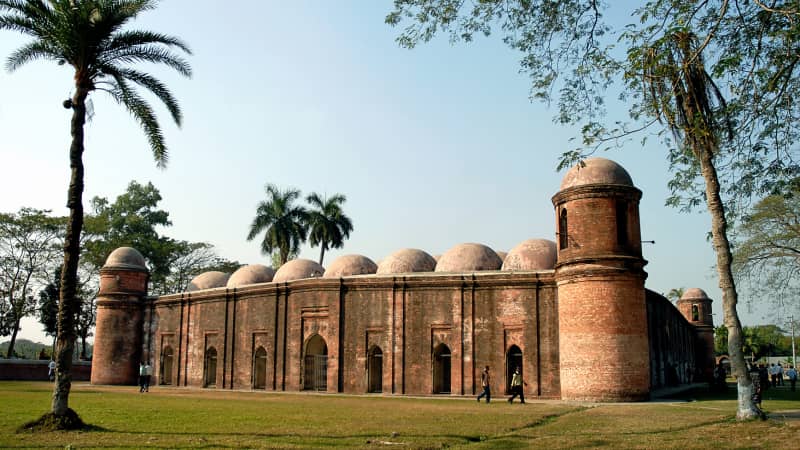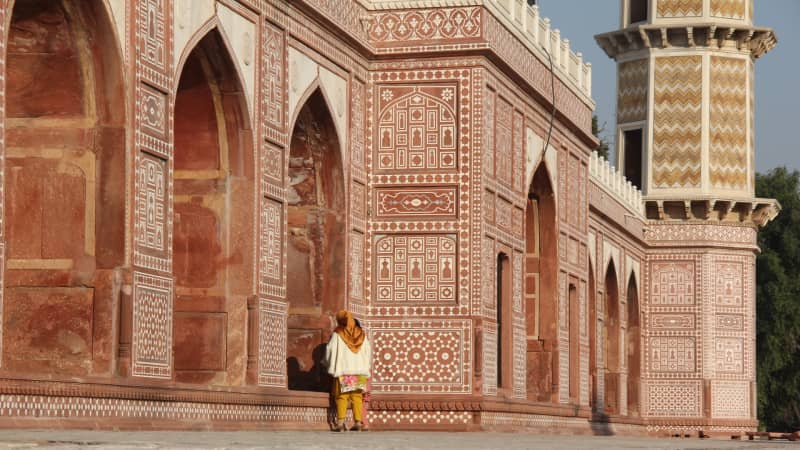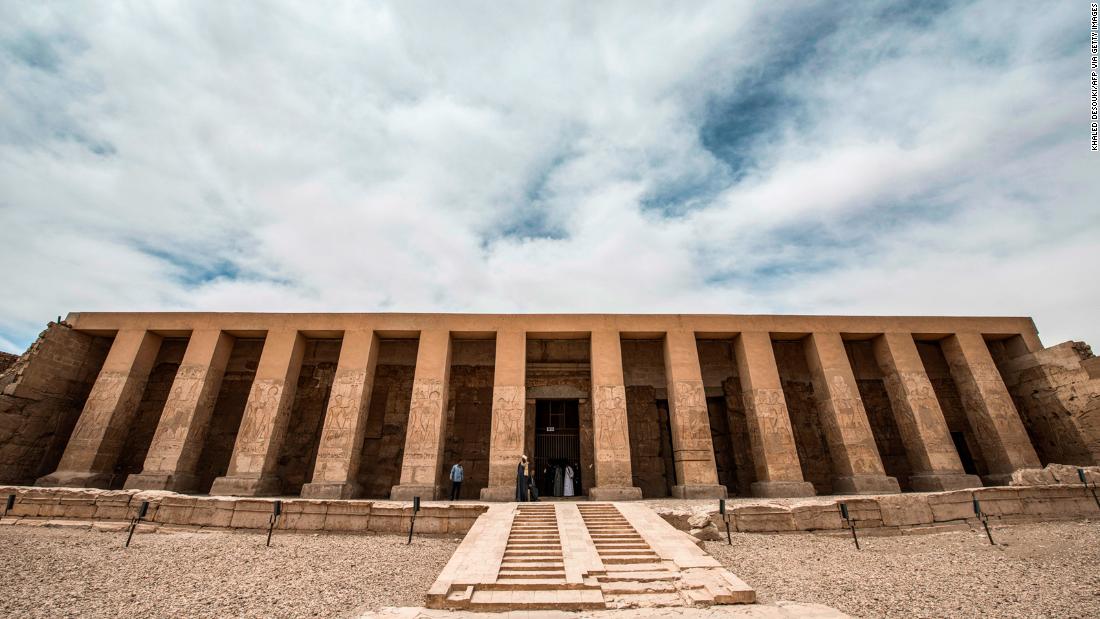The World Monuments Watch is a project run by the World Monuments Fund, a nonprofit that spotlights threatened historic and cultural sites from across the globe.
Every two years, the WMF adds new spots to its watch list, bringing awareness and helping garner funds for the sites’ ongoing protection.
To date, the organization says it’s directly contributed more than $110 million toward projects at over 300 sites. The World Monuments Fund says sites also see significant economic benefits from the increased visibility that comes with a place on the watch list.
Climate change and other threats

The World Monuments Fund added the Maldives’ Koagannu Mosques and Cemetery, pictured, to its list of endangered spots for 2022.
Courtesy World Monuments Fund
The sites highlighted this year include Hurst Castle, a historic fortress on the southern coast of England that partially collapsed in following storms in 2021. The WMF says the castle’s addition to the watch list “can help draw attention to the impact of climate change on coastal heritage through continued monitoring.”
The Maldives’ Koagannu mosques and cemetery was also placed on the list due to climate-associated risks, with the World Monuments Fund stating that the damaging effects of rising sea levels can already be seen at the site.
The WMF also highlights sites that celebrate underrepresented voices in history, including the Garcia Pasture in Texas in the US, the ancestral home of the Carrizo/Comecrudo Tribe, as well as spots impacted by what it calls “imbalanced tourism.”
In Egypt, the ancient city of Abydos is spotlighted as a site “infrequently visited by tourists despite its cultural importance.”
And while Mexico’s Teaotihuacan archaeological park is a popular destination, the World Monuments Fund includes the site on its 2022 list to highlight how Teaotihuacan’s popularity doesn’t neccessairly mean local residents reap economic benefits.

The Mosque City of Bagerhat in Bangladesh is on this year’s World Monuments Watch list.
Shutterstock
“This year’s Watch demonstrates that heritage preservation can offer innovative solutions to contemporary global challenges,” said Bénédicte de Montlaur, president and CEO of the WMF, in a statement.
“We urge the world to stand with communities and save these places of extraordinary cultural significance. Heritage sites are an incredible resource for addressing larger issues facing society as well as local needs of recognition, access, participation, and economic opportunity.”
2022 World Monuments Watch List

The Tomb of Jahangir in Pakistan is another spot on this year’s list, with the World Monuments Fund noting the site requires restoration.
Maria Gulraiz/World Monuments Fund
– Kinchela Aboriginal Boys Training Home, Kinchela, Australia
– Mosque City of Bagerhat, Bagerhat, Bangladesh
– Cultural landscape of the Bunong People, Mondulkiri Province, Cambodia
– Fortified manors of Yongtai, Fujian Province, China
– Sumba Island, Indonesia
– Heritage buildings of Beirut, Lebanon
– Hitis (water fountains) of the Kathmandu Valley, Nepal
– Tomb of Jahangir, Lahore, Pakistan
– Nuri, Sudan
– Hurst Castle, Hampshire, United Kingdom
– Lamanai, Indian church village, Belize
– Monte Alegre State Park, Brazil
– La Maison du Peuple, Ouagadougou, Burkina Faso
– Abydos, Egypt
– Asante traditional buildings, Ghana
– Tiretta Bazaar, Kolkata, India
– Benghazi historic city center, Libya
– Koagannu mosques and cemetery, Maldives
– Teotihuacan, San Juan Teotihuacan, Mexico
– Yanacancha-Huaquis cultural landscape, Miraflores District, Peru
– Alcântara and Rocha do Conde de Óbidos, Marine Stations (Almada Negreiros Murals), Lisbon, Portugal
– Fabric Synagogue and Jewish heritage of Timișoara, Timișoara, Romania
– Africatown, Mobile, Alabama, United States
– Garcia Pasture, Brownsville, Texas, United States
– Socotra Archipelago, Yemen
